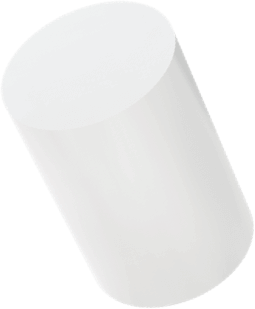When it comes to property insurance, many policyholders are familiar with terms like coverage limits, premiums, and deductibles. However, one less-discussed but equally important concept is utilization percentage. This metric plays a crucial role in determining your insurance costs and your relationship with your insurer.
What is Utilization Percentage?
Utilization percentage refers to the ratio of claims made on an insurance policy compared to the total amount of coverage provided. It serves as a measure of how much of your insurance policy’s value is being “utilized” through claims. For instance, if a homeowner with a $500,000 policy files claims totaling $50,000 over a year, their utilization percentage for that period is 10%.
This metric is vital in property insurance because it directly affects how insurers perceive risk. High utilization percentages suggest that a policyholder is filing frequent or costly claims, signaling increased risk to the insurer. Conversely, a low utilization percentage reflects minimal claims activity and suggests responsible property management.
Understanding utilization percentage is crucial for policyholders. It impacts not only their current premiums but also their ability to maintain favorable insurance terms in the long run. Insurers often use this percentage to assess risk and determine renewal rates or even eligibility for coverage.
How is Utilization Percentage Calculated?
The formula for calculating utilization percentage is straightforward:
Utilization Percentage=(Total Coverage Amount/Total Claims Filed)×100
Several factors influence this metric:
- Claim Frequency: The number of claims filed during a policy period can significantly impact the utilization percentage. Frequent claims, even if small, can raise red flags for insurers.
- Claim Severity: Large claims due to significant damages or losses contribute more to utilization percentage than smaller claims.
- Insurer’s Loss Ratio: This represents the ratio of claims paid by the insurer to the premiums received. A high loss ratio may result in stricter scrutiny of utilization percentages.
The Impact of Utilization Percentage on Insurance Premiums
A high utilization percentage often leads to increased premiums. From an insurer’s perspective, policyholders with frequent or costly claims represent a greater risk. To compensate, insurers may raise rates, apply stricter terms, or limit coverage options.
On the other hand, maintaining a low utilization percentage can help policyholders secure lower premiums and favorable terms. Strategies to improve utilization percentage include:

- Minimizing Claims: Avoid filing claims for minor damages that can be managed out of pocket.
- Proactive Maintenance: Regular property upkeep can prevent damage and reduce the need for claims.
- Bundling Policies: Combining multiple insurance policies with the same insurer can sometimes offset higher utilization percentages.
Tips for Maintaining a Low Utilization Percentage
Keeping your utilization percentage low requires proactive measures and a strategic approach to handling claims. Here are some tips:
Preventative Measures to Reduce Claims
Regular maintenance of your property is essential. Address issues like roof leaks, plumbing concerns, and electrical problems before they escalate into larger, claim-worthy damages.
Promptly Reporting Claims
While avoiding unnecessary claims is beneficial, when a legitimate claim arises, report it promptly. Delays in reporting can lead to higher costs and negatively impact your utilization percentage.
Cooperating with the Insurance Adjuster
Clear communication with the insurance adjuster ensures accurate and efficient processing of claims. A cooperative approach minimizes disputes and facilitates quicker resolutions.
Choosing Reputable Repair and Restoration Services
Reliable contractors can ensure quality repairs, reducing the likelihood of recurring issues and subsequent claims.
By implementing these strategies, policyholders can reduce claim frequency and severity, keeping their utilization percentage in check.
The Role of Insurance Agents in Managing Utilization
Insurance agents play a pivotal role in helping clients manage their utilization percentage. Their expertise can provide valuable insights into maintaining low claims activity while ensuring adequate coverage.
Educating Clients on Utilization
Agents can explain how utilization percentage affects premiums and coverage options, empowering clients to make informed decisions about claims.
Strategic Planning
By reviewing a client’s claim history and property management practices, agents can recommend tailored strategies to minimize claims. For example, they might suggest specific endorsements or riders to address risks unique to a property.
Advocacy and Support
In cases where claims are necessary, agents act as intermediaries between clients and insurers, ensuring claims are filed correctly and processed efficiently.
Through proactive guidance, insurance agents help clients maintain favorable utilization percentages and long-term relationships with insurers.
Navigate the Property and Liability Insurance World in California
Understanding utilization percentage is essential for property insurance policyholders. It serves as a critical indicator of claims activity and risk, directly influencing premiums and coverage terms. Taking control of this metric reduces expenses and fosters a strong relationship with your insurer, ensuring peace of mind for years to come.
Home insurance in California for rental properties may be confusing. Partner with Pronto Insurance in California and navigate the insurance world with ease. Contact us!













